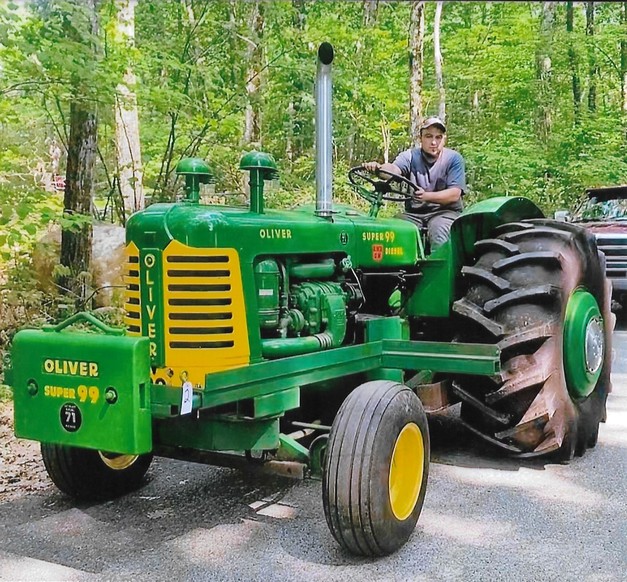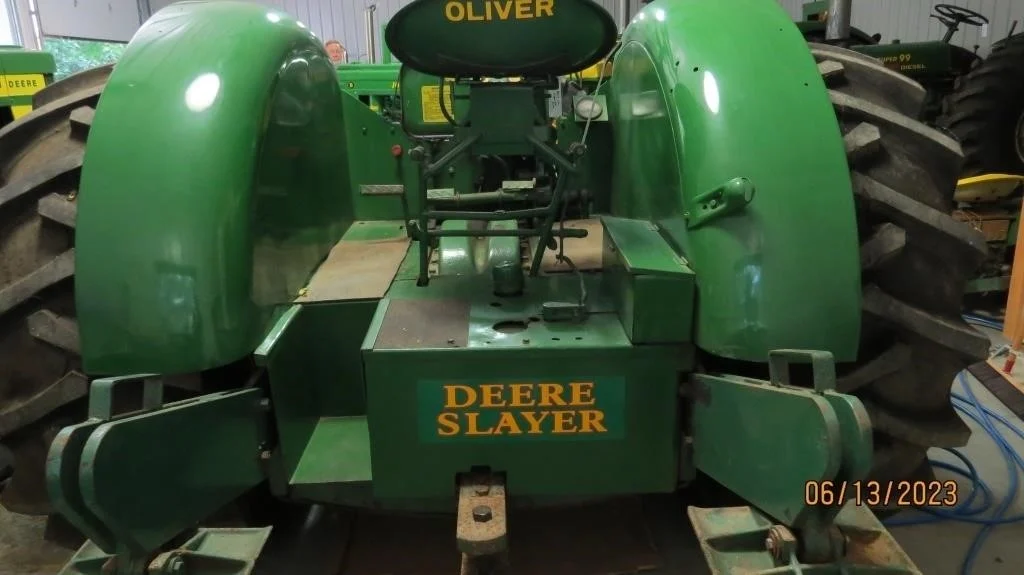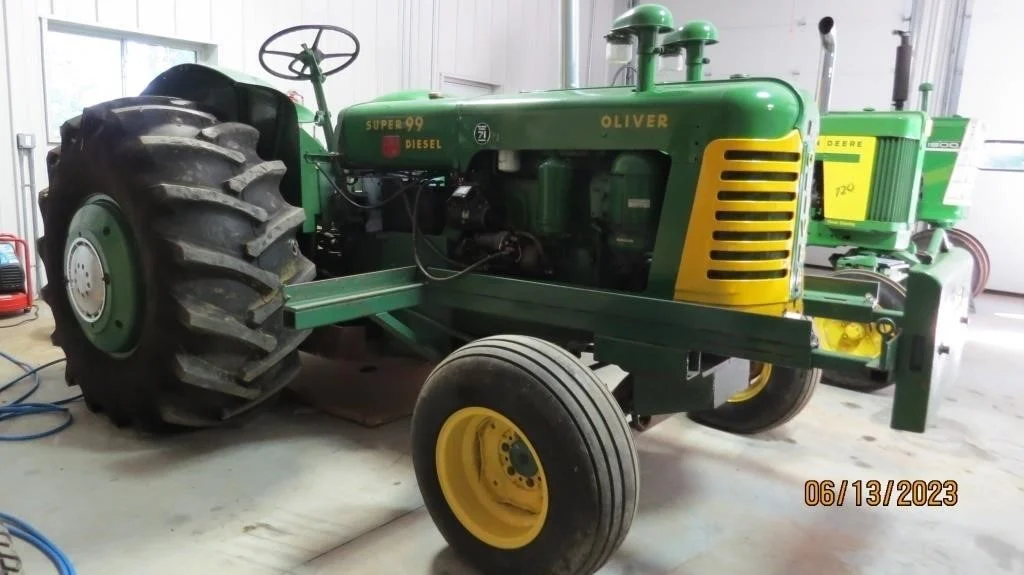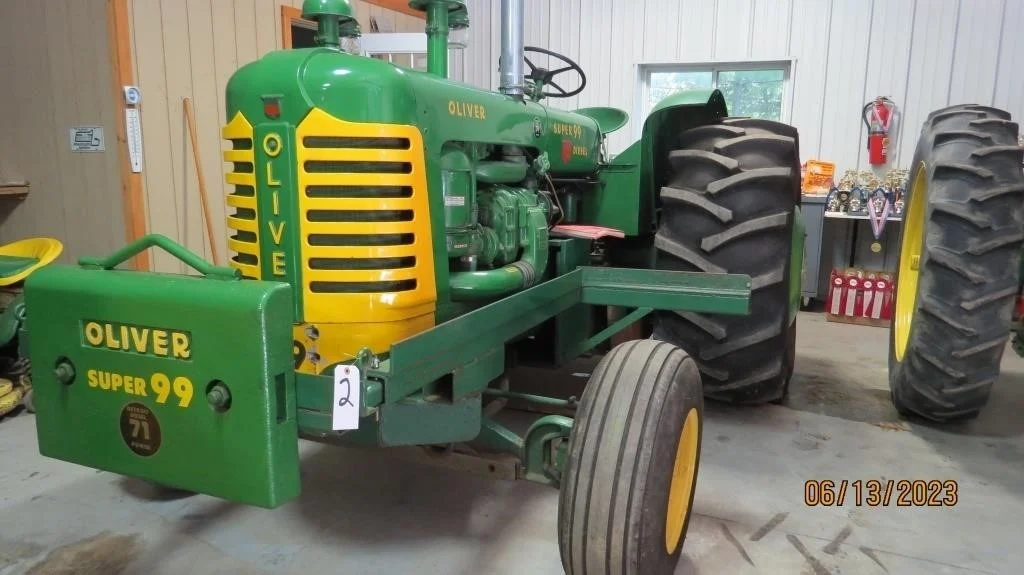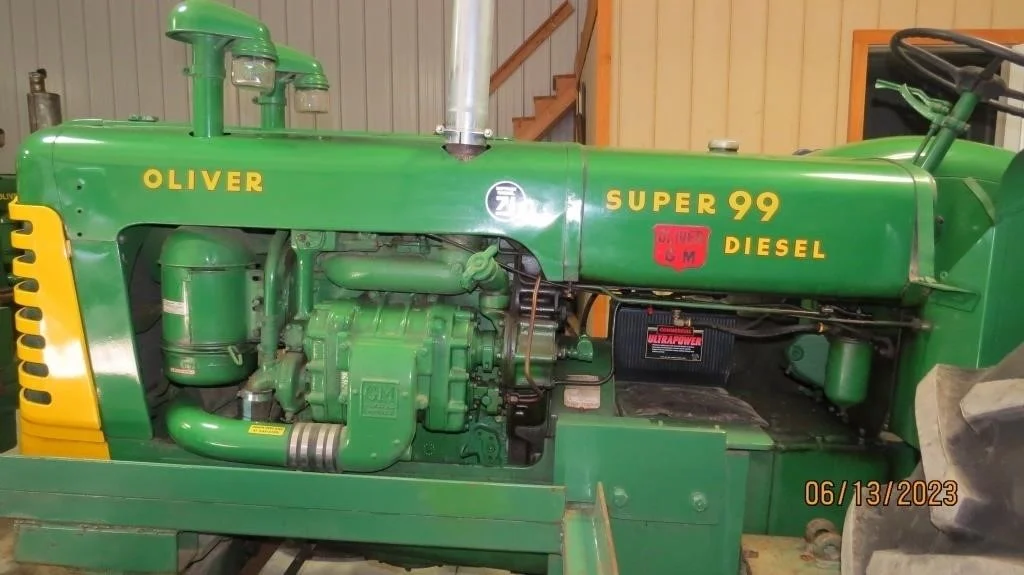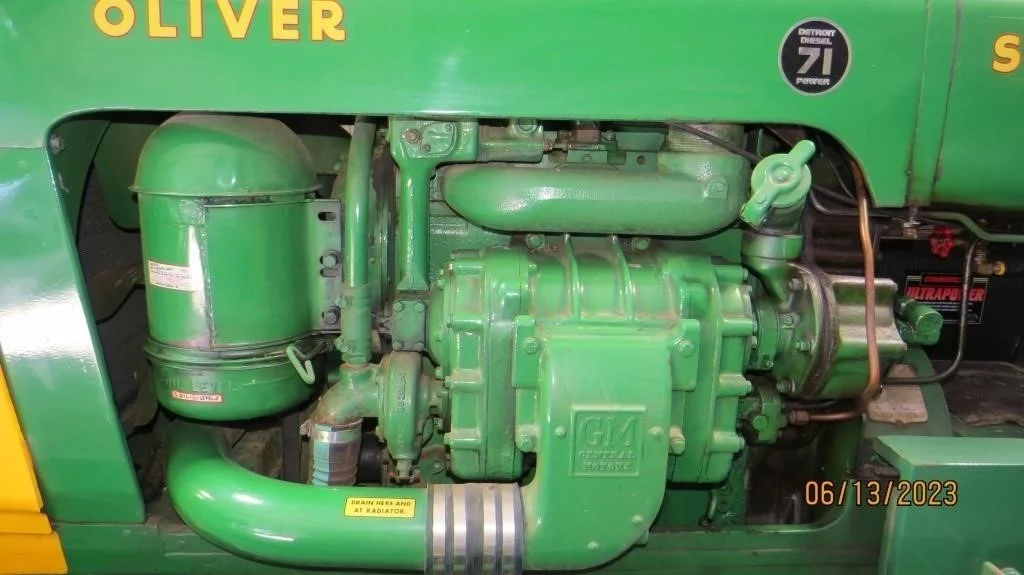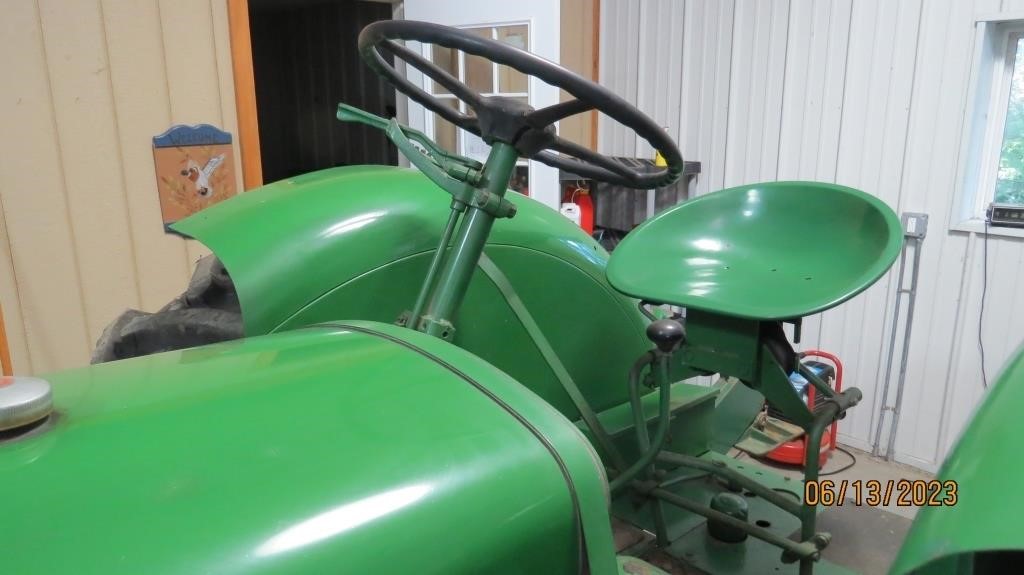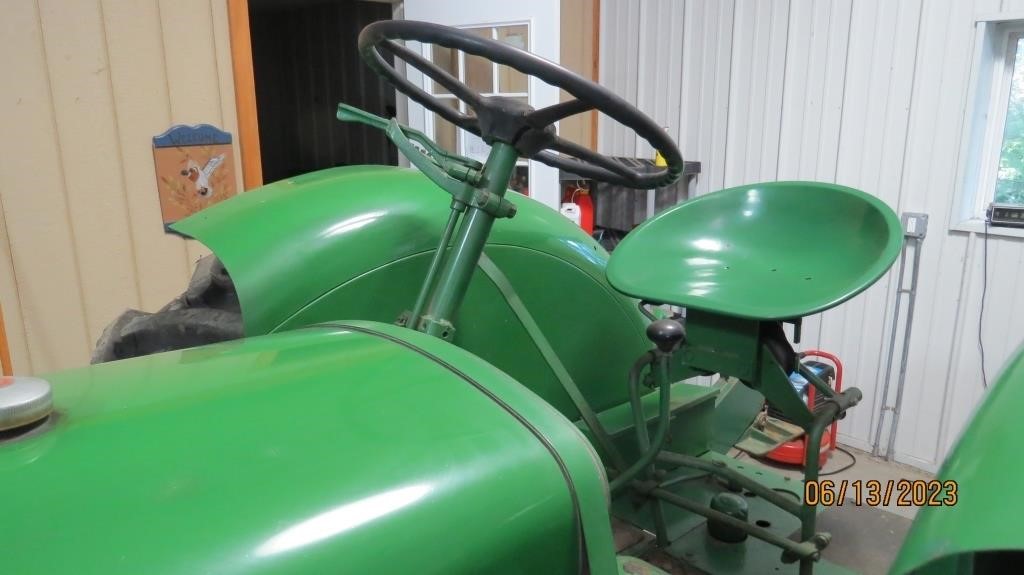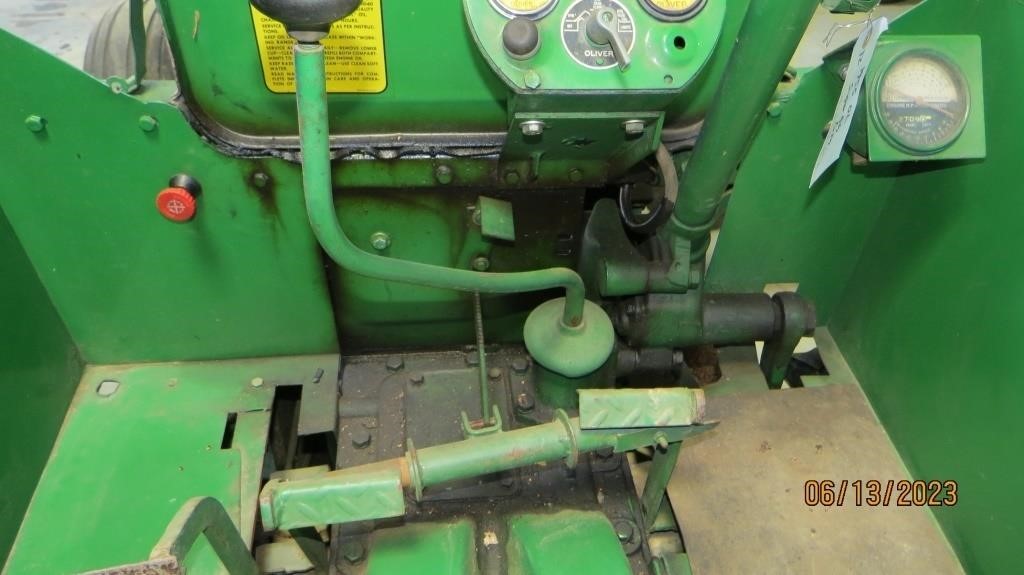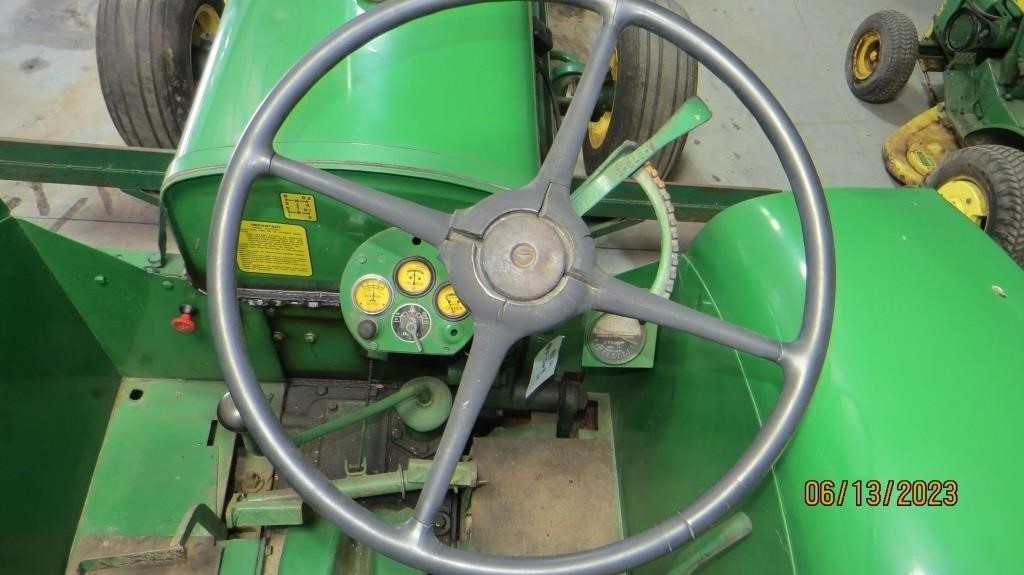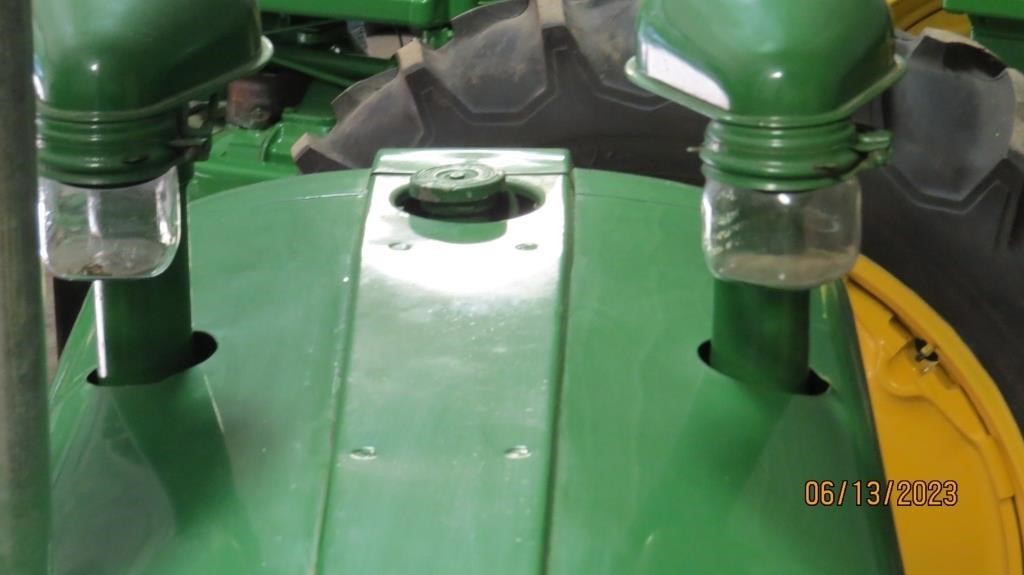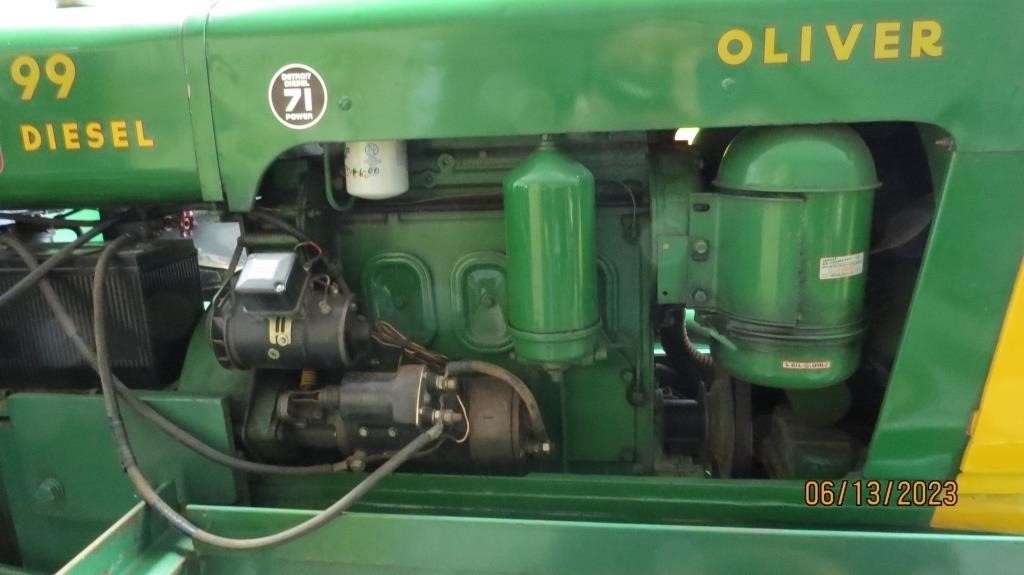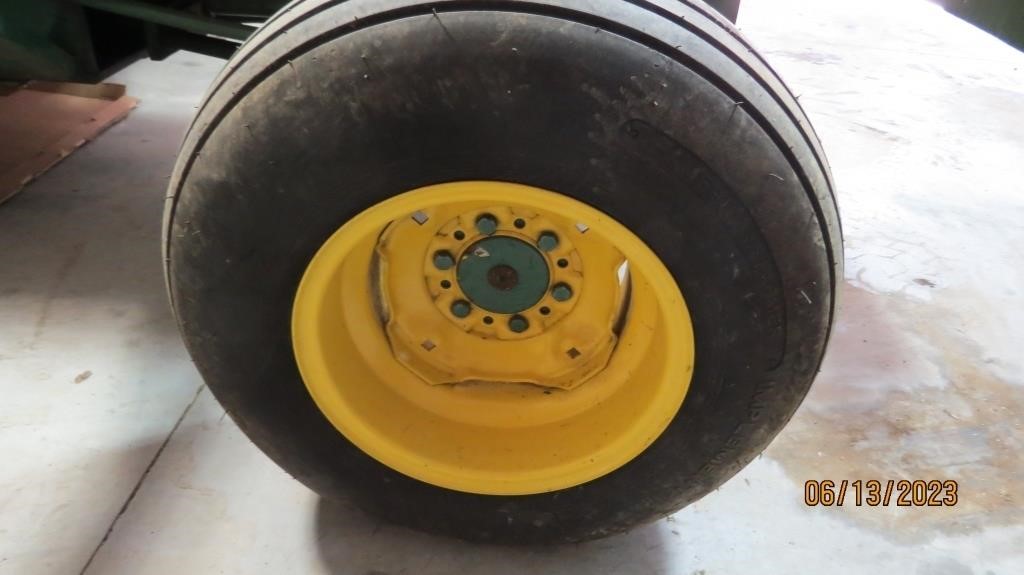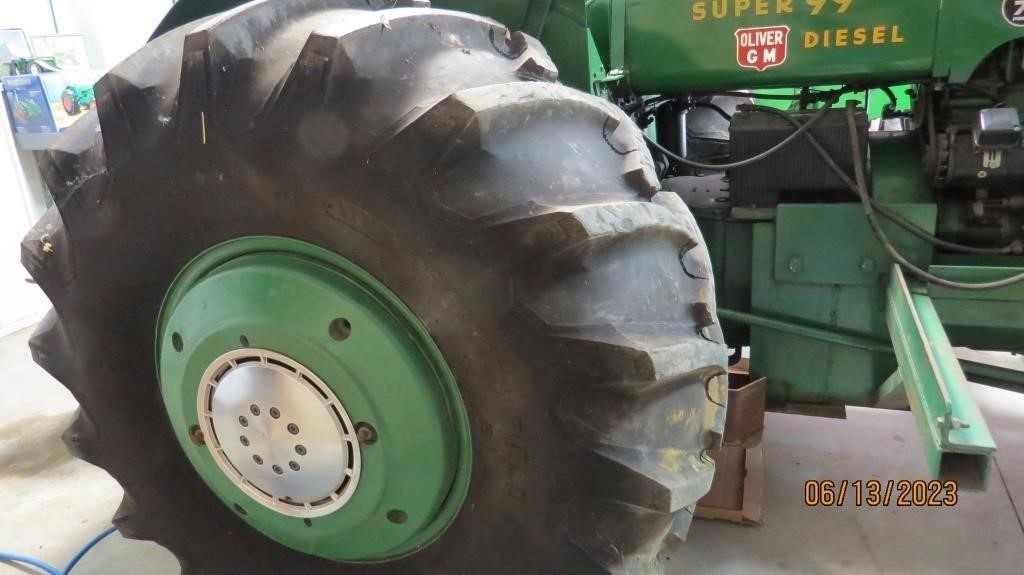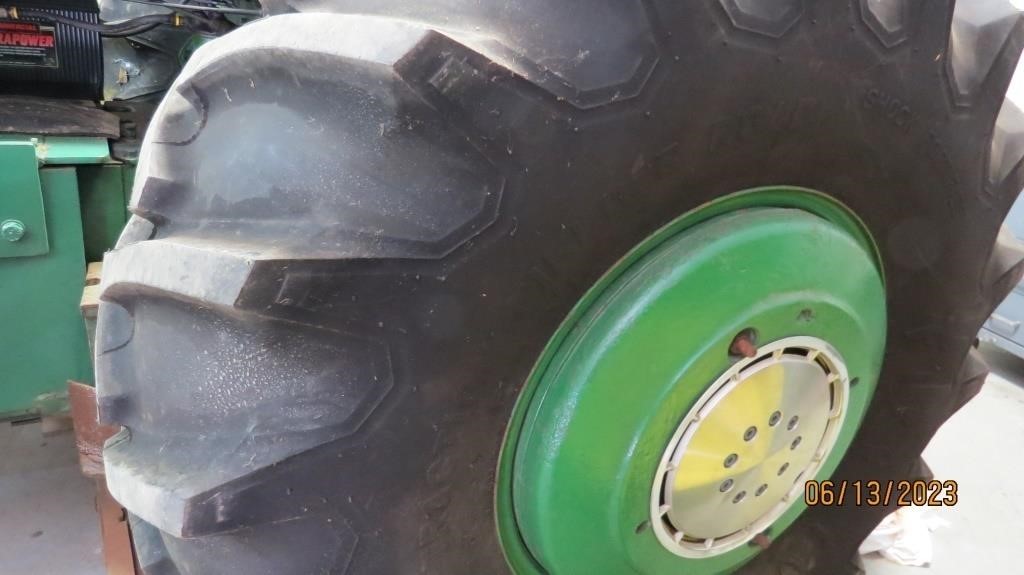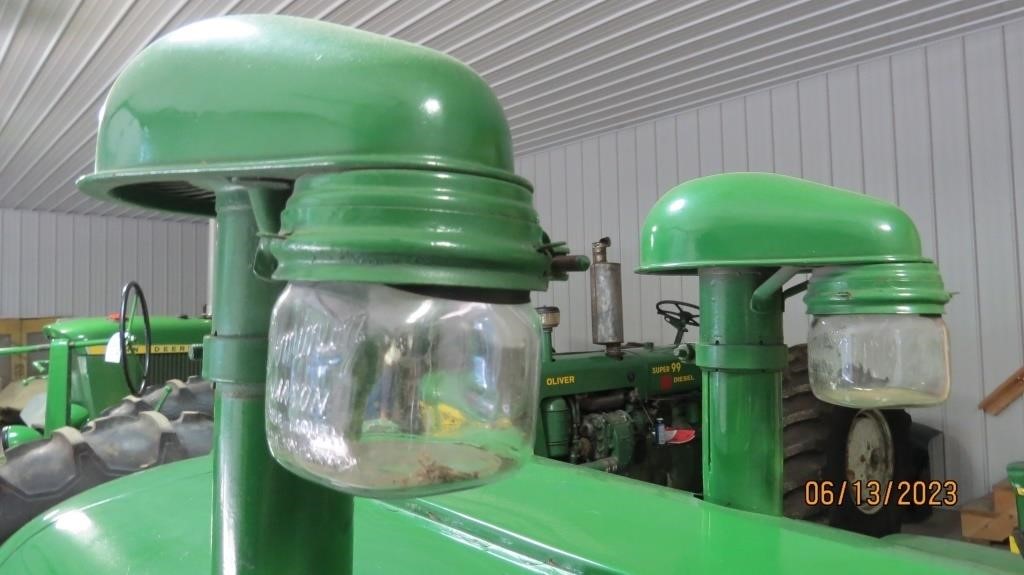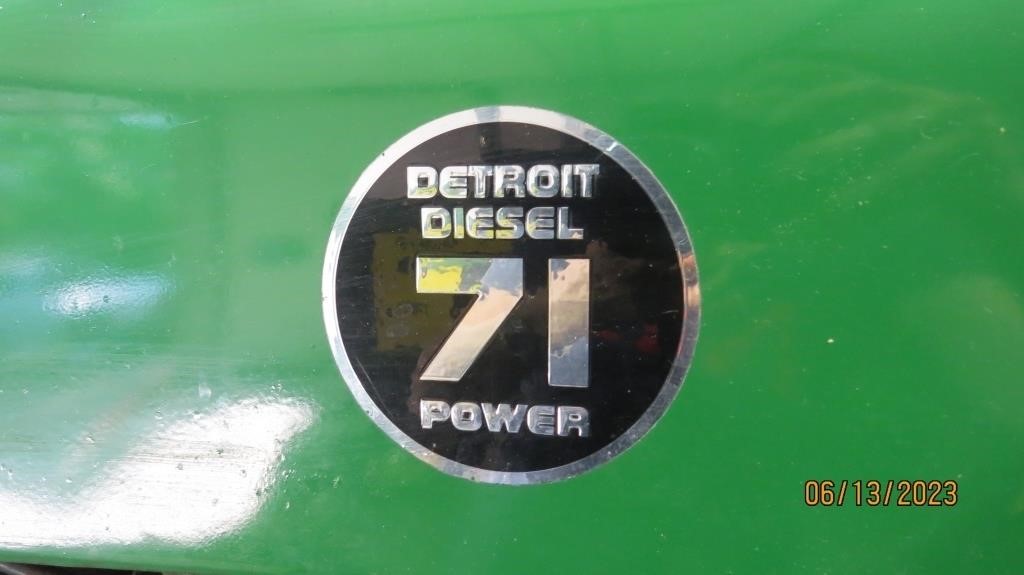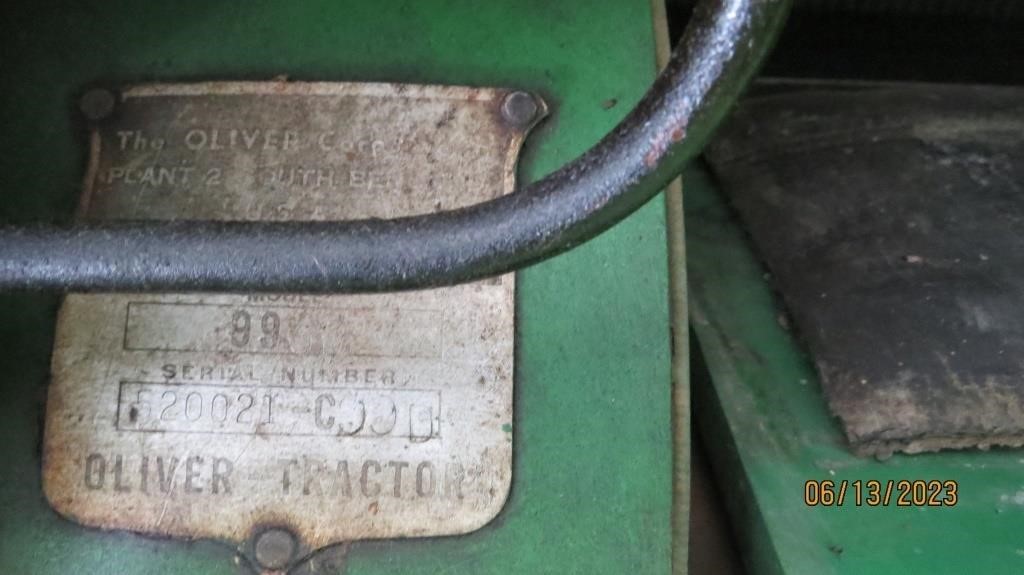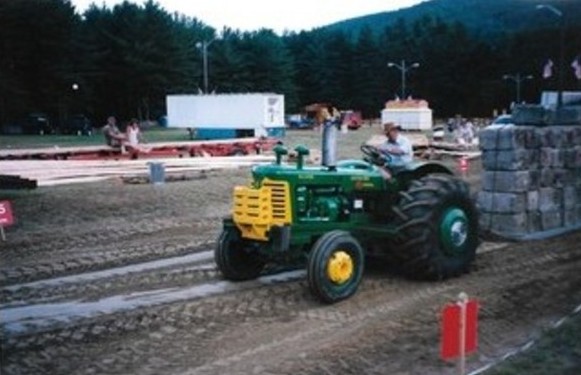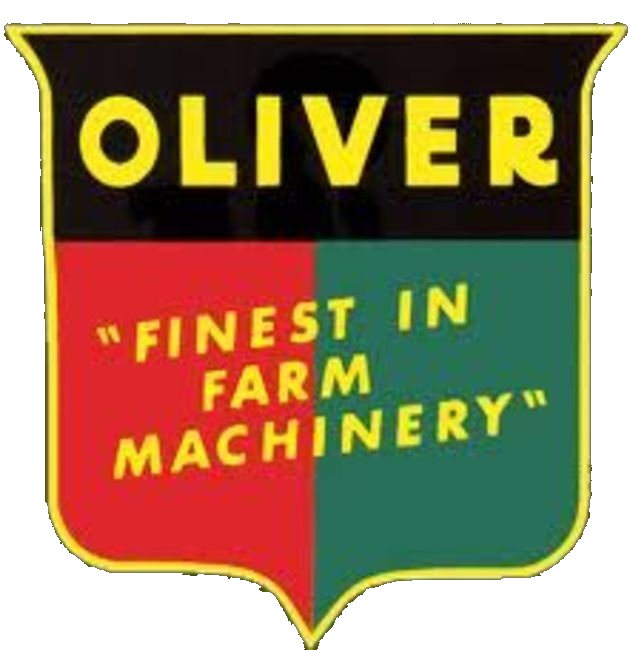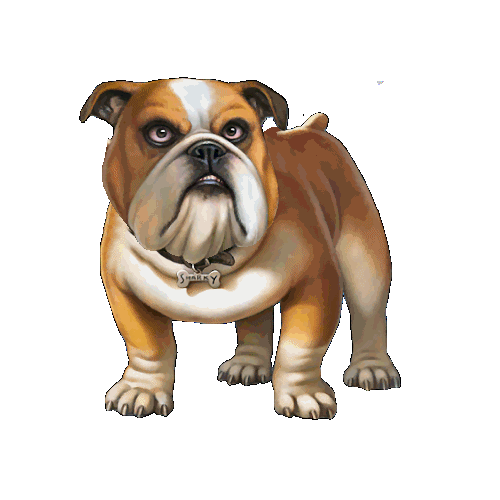|
"The Deere Slayer"
A Brief Look At Oliver Super 99 History
With the two-cycle engine, each down stroke of the piston was a power stroke. The GM diesel engine was equipped with a blower which forced air into the air inlet ports of the cylinder when the piston was at the bottom of the stroke. The two exhaust valves at the top of the cylinder were open, so the flow of air swept out the exhaust gases and filled the cylinder with clean air. As the piston moved upward, it closed the inlet ports and the exhaust valves closed for the compression stroke.
The Oliver Super 99 GM could be easily recognized with its two air cleaner stacks above the hood and its unique two-cycle sound. The GM 3-71 two-cycle diesel engine featured a 4.25-inch bore and a 5-inch stroke for a displacement of 71 cubic inches per cylinder or 213 cubic inches for the engine. A rated engine speed of 1,675 rpm resulted in 83.4 belt horsepower at its Nebraska tractor test, compared to 65.0 belt horsepower for the Super 99 Diesel with its four-cycle, six-cylinder engine with 302 cubic inches.
The six-speed transmission produced speeds ranging from 2.6 to 13.7 mph with 15-34 (now 18.4-34) rear tires. The independent 532-rpm PTO was available as an option as was the belt pulley which attached to the PTO shaft. A hydraulic system operated a remote cylinder with a 16-inch stroke. Operator comfort and convenience included a clear platform with a built-in step, dust shields around the front of the platform, and crown fenders. The seat was equipped with rubber torsion springs. Power steering was optional.
If you do not already have it installed, Adobe
Adobe Acrobat Reader DC
Oliver 99 Series 71
GM Specifications
Nebraska Tractor Test
Our Research Source
| ||||||||||||



